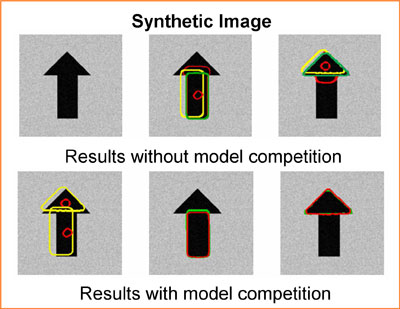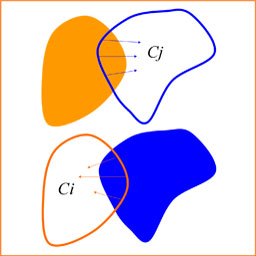
In medical images, distinct boundaries may not exist between the structures to enable edge detection of organ boundaries because of the similarity between these structures and the presence of noise. Furthermore, the boundaries may be blurred and ambiguous due to partial volume effects, which are caused by the finite resolution of imaging devices. These problems make the segmentation of neighboring structures a challenging task.
In this project, a novel approach for segmenting medical images by enabling interaction between neighboring structures is investigated. The motivation for our method comes from the observation that introducing interaction between evolving neighboring contours improves segmentation of neighboring structures.
The interaction model proposed in this work consists of attraction, repulsion and competition, which are naturally modeled by analyzing the relationship of object contours and their shape estimates. Accordingly, we also propose an extended maximum a posteriori (MAP) estimation method to estimate the shape estimates of structures used in the interaction model. In the proposed work, a novel energy functional is formulated according to the interaction model and segmentation is achieved by minimizing this energy functional. With the proposed method, multiple neighboring structures with similar intensities and/or textures, and blurred boundaries can be extracted simultaneously.

Our method was applied on both synthetic image and real medical images. Allowing model competition will help to obtain good and robust segmentation results.



Segmentation of neighboring organs in medical image with model competition,
Int. Conf. Medical Image Computing and Computer Assisted Intervention (MICCAI),
vol. I, pp. 270-277, Palm Springs, CA, USA, October, 2005.
Pingkun Yan, Ashraf A. Kassim, Weijia Shen, and Mubarak Shah,
"Modeling Interaction for Segmentation of Neighboring Structures",
IEEE Trans. Information Technology in Bio Medicine, Volume 13, Number 2, pp 252-262, March 2009.